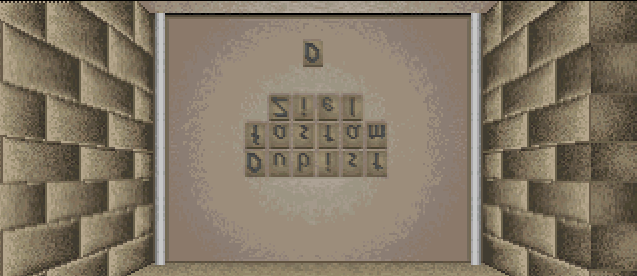The MS datafile format is pretty simple and it reminds me of .bmp images (there is a header, after that palette and after that pixel data). At the first 4 bytes is size of the pixel data field. After that is 1 byte, which is the size of the palette. The palette follows after that. Pretty interesting thing is, that each color is brightened by the engine (shifted by 2 to the left), so we have to count with that when making a new image and generating palettes for them. This also means, that we loose a lot of colors (We for example aren’t able to encode the whole 256 colors of grayscale). After the palette is information about sections. Section is a image, that can get rendered on top of other sections (images). The information is basically only it’s size, location on the screen and location of it’s pixel data inside the file. Next is click field information. Click field is similar to section, it has size and location on the screen, but it doesn’t have image assigned to it. After this follows 2 to 258 bytes used to decompress the image. The last thing is the pixel data for all the sections.
The tool right now is semi-automated (I think automated enough). As it’s input it uses files containing palette, section and click field descriptions and a .bmp file for each section. It just copies the descriptions into the file after which it takes the pixel data from each .bmp image and copies them too. The thing, that isn’t automated is, that user has to tell the tool by a command line argument, where the pixel data of the images start (how many bytes of each .bmp image to skip)
I wrote the reasons, the tool is needed in the last post, but just to remind you. The main reason is, that we need to translate this image:




